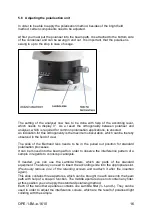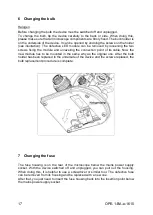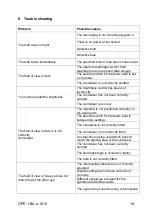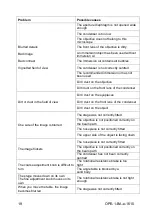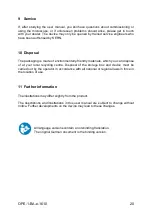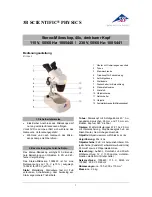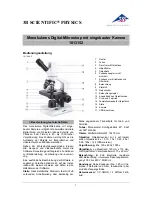
OPE-1-BA-e-1610
16
5.6 Adjusting the polarisation unit
In order to be able to apply the polarisation method, besides of the bright field
method, certain components need to be adjusted.
At first you must put the polariser into the beam path. It is attached to the bottom side
of the condenser and can be swung in and out. It is important, that the polariser is
swung in up to the stop in case of usage.
The setting of the analyser now has to be done with help of the according lever,
which needs to display 0°. As a result the orthogonality between polariser and
analyser, which is required for common polarisation applications, is ensured.
An indication for this orthogonality is the maximum obscuration, which can be thereby
observed in the field of view.
The slide of the Bertrand lens needs to be in the pulled out position for standard
polarisation processes.
It can be moved into the beam path in order to observe the interference pattern of a
sample in regards to conoscopic analysis.
If needed, you can use the Lambda filters, which are parts of the standard
equipment. Therefore you need to insert the according slide into the appropriate slot.
(
Previously remove one of the retaining screws and reattach it after the insertion
again
).
This slide contains three apertures, which can be brought in each case into the beam
path with help of a snap-in function. The middle aperture does not contain any filter,
at this position you can apply the standard polarising method.
Each of the
two other apertures contains one Lambda filter (¼ λ and λ). They can be
used in order to adjust the interference colours, which are the result of polarised light
colliding with the sample.
Содержание OPE 118
Страница 2: ......
Страница 7: ...OPE 1 BA e 1610 6 2 Nomenclature...
Страница 9: ...OPE 1 BA e 1610 8...















